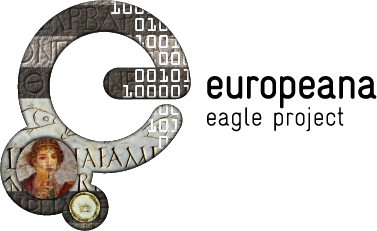After the end of the EAGLE project nothing has stopped or ended. IDEA carries on the day to day tasks of maintenance and development of the EAGLE portal and the related resources. It offers support to existing projects and to new ones, and it carries out for its members at no additional cost the integration tasks to incorporate data into EAGLE. Two examples of projects supported by IDEA are reported below.
Trismegistos API
Trismegistos has accomplished the incredible task of disambiguating all existing digitized texts during the lifetime of the EAGLE project, but the process of update of these information in the databases providing the information had to follow a procedure where the valuable correspondences tables were sent over from one partner to another. Within the scope of its action IDEA has developed a small tool, based at the university of Hamburg, which serves this data via a data API which can respond dynamically to the request for parallel texts connected to a Trismegistos ID, either starting the query from a local id or from a Trismegistos id and returning several common format for developers work. Currently already EAGLE and EDH use this service in production. In the future Trismegistos might host this app directly, thus avoiding even the last step between them and the final users of the ids.
OEDUc
Under the initiative of the Institute of Classical Studies, an Open Epigraphic Data Unconference has been organized with several very interesting outputs of the work carried out during the day with the aim to reuse the freely available data provided by the Epigraphic Database Heidelberg. Among these actions IDEA has put together a small application, based on some work carried out for the Pondera project in Leuven la Neuve, which can perform several tasks.
Each item can be edited normally (create, update, delete). The editor that updates files reproduces at an example level in a simple XSLT a part of the Leiden+ logic and conventions to enter data or update existing data. The user can create a new entry with the leiden plus editor and save it. In the item view the user can find tables with metadata, the text, some additional information on persons and a map. The text exploits some of the parameters of the EpiDoc Stylesheets. Users can change the desired value, hit change and see the different output, thus presenting the text in multiple styles. The ids of corresponding inscriptions, are pulled from the EAGLE ids API described above. The EDH id is instead used to query the EDH API and get the information about persons, which is printed below the text. For each element with a @ref in the XML files you will find the name of the element and a link to the value. E.g. to link to the EAGLE vocabularies. In case this is a TM Geo ID, then the id is used to query Wikidata SPARQL endpoint and retrieve coordinates and the corresponding Pleiades id (given those are there). Same logic could be used for VIAF, geonames, etc. The pleiades id thus retrieved is then used in javascript to query Pelagios and print a map.
This was done in the context of the event to demonstrate how freely available resources indeed can, easily interoperate and enrich not only one source of data but all of those who are connected with one another. We could imagine from these examples a properly engineered platform that could do this for all of the available text and exploit at the same time contributions to Wikidata, to Pleaides, to Trismegistos, etc…. But we should not start from scratch when so much good and reusable work has already been done. Having then the data collected and redistributed by a service would enhance in each of the existing databases the available contents making all benefit from the work and contributions of everyone.

